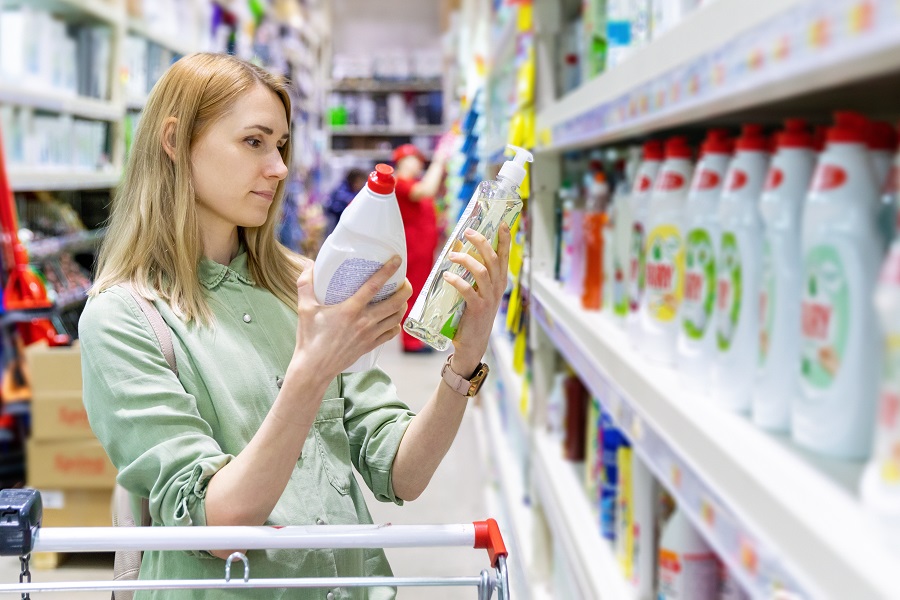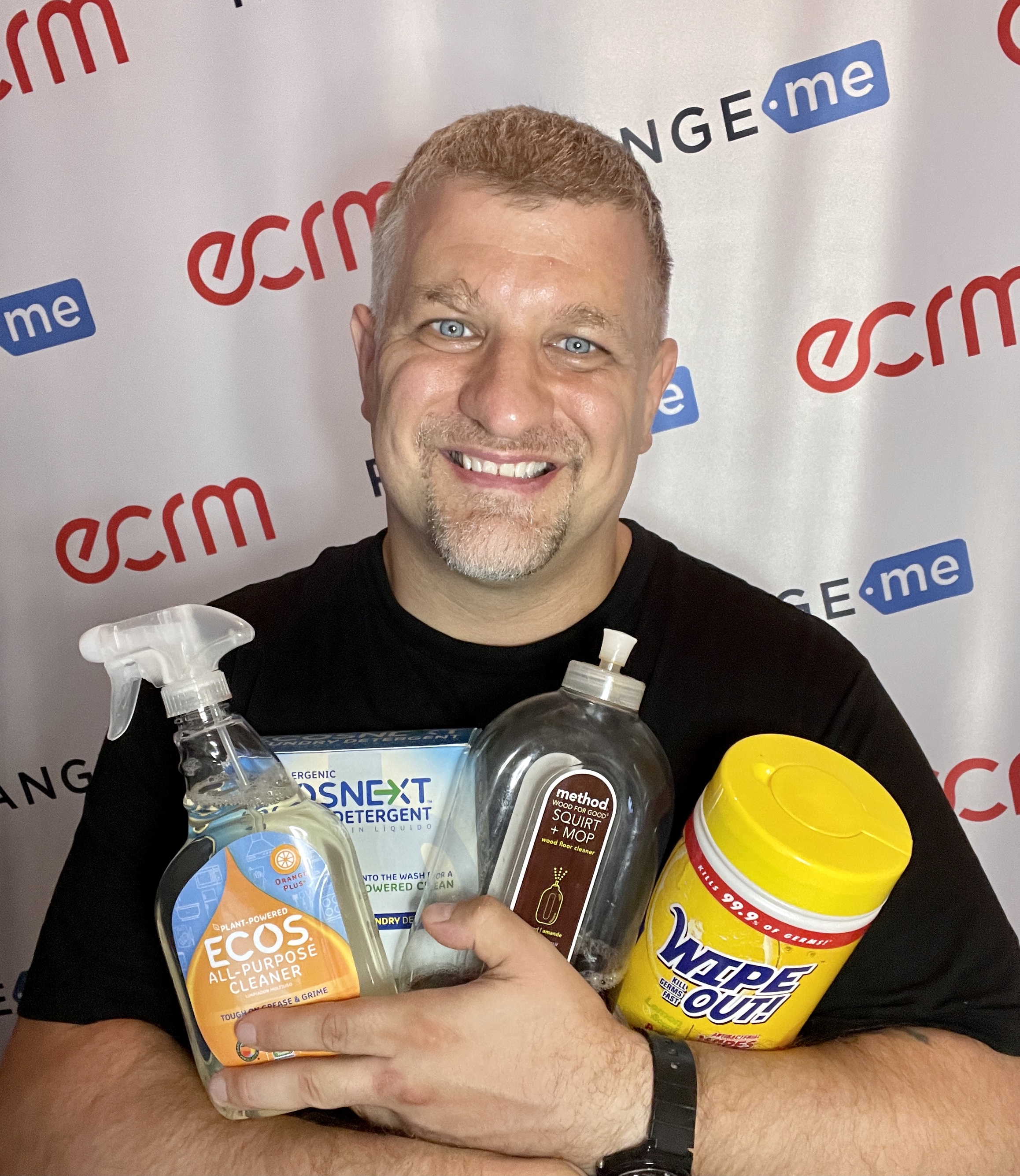As We Venture Out More, What Happens to the Household Care Category? 7/20/2021
 During the past year and a half, we did everything in our homes. Worked from home. Learned from home. Ate all of our meals at home. And, increasingly, we shopped from home.
During the past year and a half, we did everything in our homes. Worked from home. Learned from home. Ate all of our meals at home. And, increasingly, we shopped from home.
Not surprisingly, this resulted in the need for more household care products than ever before. Hoarders notwithstanding, we needed cleaning and paper products for the messes we created while cooking at home. Food storage containers for leftovers. And switching from office outfits to virtual meeting clothes meant less dry cleaning and more laundry detergent (for those who actually changed outfits, that is). And we sanitized EVERYTHING, so we stocked up on wipes and bleach and anything we thought would kill viruses.
As COVID subsides and we go back to our pre-pandemic lifestyles (sort of), some of these new habits will remain. But which ones? During ECRM’s Household Cleaning, Food Storage & Paper Products Program, I spoke with a dozen buyers from a variety of retail chains to get their insights on how today’s consumer is shopping these categories as we start to emerge from the pandemic. (Those Household Care brands participating in ECRM’s Upcoming Global Market: Fall Experience, will find this helpful for your meetings).
One thing’s for sure, though. The customer journey has been permanently altered. “Two-thirds of consumers we surveyed said that they have changed the way they shopped,” says Carman Alison, VP of Consumer Insights for NielsenIQ, who I interviewed in an on-demand fireside chat-style presentation for the program (see video below). “This is probably the first time in the history of our research where we had a consumer trend such as COVID impact every single consumer in some way or another.”
The Supply Chain Challenge
One thing we all experienced during the pandemic was the mad rush for household cleaning and paper products. And while we aren’t really stockpiling as much anymore, the ramifications from last year’s surge are still being felt. According to several retailers I spoke with, supply chain issues still impact the category, and many national brands are on allocation, which means that some retailers still face occasional out-of-stocks.
While consumers know and trust the national brands, these supply chain issues led to some opportunities for emerging brands to drive trial and snag new customers. However, not all of them were up to the task. Case in point: several months ago my local drug chain’s paper aisle went from completely empty to fully-stocked – only it was with brands I never heard of before. Great, I thought. I’ll give a new vendor a try. Only problem is that these new paper towels pushed spills around, rather than absorbed them. Opportunity lost for them. Remember brands, if you are going to unseat the champion, you have to get a knockout.
Surge in online household care sales
Whether it was due to empty store shelves or for safety reasons, more people turned to ecommerce for CPG purchases last year than ever before, and this is a change that will have lasting impact beyond the pandemic as these consumers, 22 million which were first-time CPG ecommerce shoppers, continue purchasing online. According to NielsenIQ’s Allison, online was the fastest growing retail channel last year for CPG, hitting $160 billion in sales during that period.
Thirty percent of consumers bought household care products online. “While the average online share for CPG was 12.8 percent, for household care products, it’s almost double that at 23 percent,” says Allison. “When you have almost a quarter of your business shifting online, that’s being fueled by the omni shopper. They realized that if something is out of stock in a store, they can easily go online and search for it across many retailers.”
And once they were online, they stayed because of the convenience. They discovered the ease of subscriptions for items they need to replenish regularly like paper products or detergent, and the fact that they don’t have to lug these heavy or bulky items themselves.
Indeed, many of the retailers I spoke with are doubling-down on digital, looking for brands that have drop-ship capabilities, providing curbside pickup, and creating special digital-only offers. Those who have gotten into the digital game strong during the pandemic will reap the benefits long-term, because the great thing about omni shoppers is that they are big spenders. “They spend 20 percent more than the average consumer,” says Allison. “That’s why as a retailer or manufacturer you can’t ignore them, because they will help drive your growth strategy.”
Sustainability & clean products
While some consumers may have deprioritized the health of the planet behind their own health during the early months of the pandemic, one result of COVID was that consumers have become more vigilant about the ingredients in the products they buy, and the impact they have on both themselves, their family and the environment.
Indeed, a recent Bloomberg Businessweek article reported on how homes and offices actually have microbiomes of their own, and that some ingredients found in cleaners and sanitizers may do more harm than good as they kill off the healthy bacteria while letting superbugs spread. Consumers are paying close attention to studies like this, much more so than in the past. Podcasts and social media are also providing a wealth of information in this area and consumers spent a lot of time during quarantine soaking it up.
Not only is it important for retailers to offer a variety of natural and clean-ingredient products, but they must provide strong messaging around it. “Consumers are much more knowledgeable about products, and want to buy things they believe in,” says Christina Vander Weide, Associate Buyer, Household Cleaning and Laundry, Meijer. “When it comes to natural cleaning products, messaging at the shelf is key, particularly callouts about sustainable or clean-ingredient claims, and a digital presence is absolutely necessary. Shoppers need to be able to do their research instantly.”

Sustainability also applies to paper and food storage products, as well, with more consumers—particularly Millennials and Gen Zers – seeking products made from recyclable materials, or those that can easily be recycled or composted.
Go big or go home
One shopping behavior that may remain post-pandemic is the demand for larger sizes and multipacks when it comes to household care products. Part of this was driven by the fact that consumers wanted to shop less frequently in stores, part of it was the fear of running out. Another factor is the shift to ecommerce, where consumers tend to buy these items in bulk as they don’t have to transport them home themselves.
Value-seeking shoppers
Larger pack sizes and multipacks are of particular interest to those shoppers NielsenIQ refers to as “constrained.” According to Nielsen, the number of consumers identified as newly constrained has doubled from 23 percent to 46 percent in the four months between September and December 2020. By definition, these newly constrained consumers have experienced a decline in household income, or their financial situation has worsened, leading them to consciously watch what they spend. And as economic stimulus packages and furlough schemes come to an end in some countries, those numbers are at risk of rising.
“These consumers may still continue eating at home, and seeking more value in their purchases,” says NielsenIQ’s Allison. “They may seek private label products, or multipurpose cleaners vs. separate cleaners for each task.”
Looking ahead
Moving forward, we can expect to see more shifts in how consumers shop the category. As people head back to the office, they may sent more clothes out for dry cleaning and do less laundry at home. Same goes for cooking. Dining out may result in less need for paper, cleaning and food storage products at home.
Then again, many of the habits created during the pandemic may stick. I certainly will continue eating at home, and I know that my neighbor continues to order paper products online – if the huge packages I regularly see in my building’s vestibule are any indication.
“We’re expecting to see some shifts in the household care categories as things open up and people get back to work,” says Michael Schueler, Sr. Category Manager - Household Cleaning and Laundry, Southeastern Grocers. “For example, dish detergent sales will soften as people go out to restaurants more, starches and softeners will come back as people dress up more for the office. As life begins to normalize, we will see purchasing behavior shift but overall with a higher base than prior to the pandemic in most categories.”
One thing’s clear. It won’t be easy to predict which COVID-related changes will stick and which will revert back to pre-COVID activities. It’s likely most will maintain some sort of hybrid. As retailers and brands, we’ll have to keep a close eye on our shoppers, wherever they are – via loyalty programs, digital tracking, in the stores – and do what we can to assure them that we are there for them when, where and how they prefer to engage with us.
For information about November's Household Cleaning, Paper & Disposable Food Storage Program, email Tony Giovanini or visit the website here.
You can download the slide deck from this presentation here: ECRM NielsenIQ Homecare 2021.pdf


